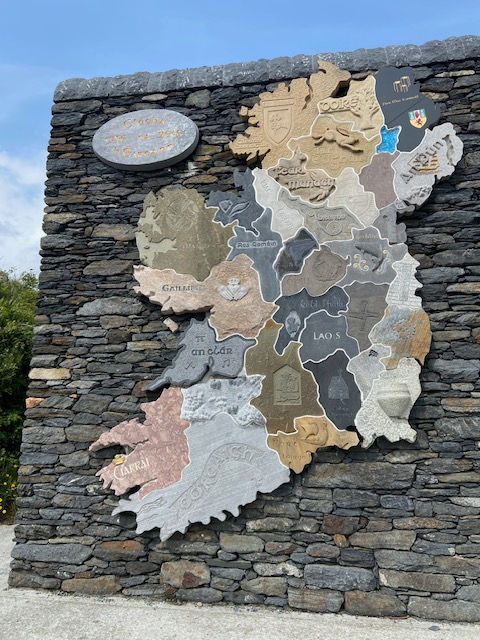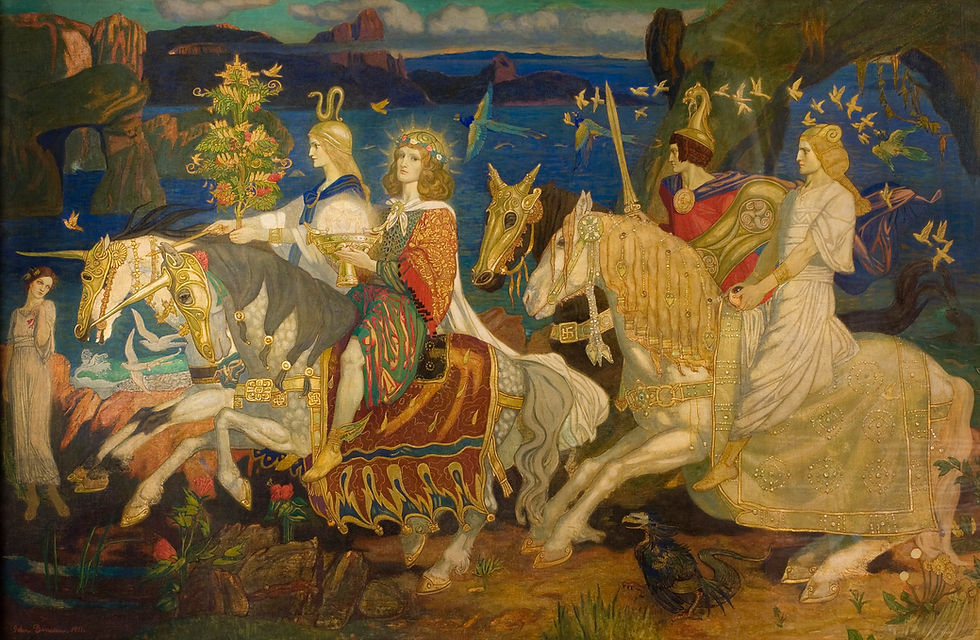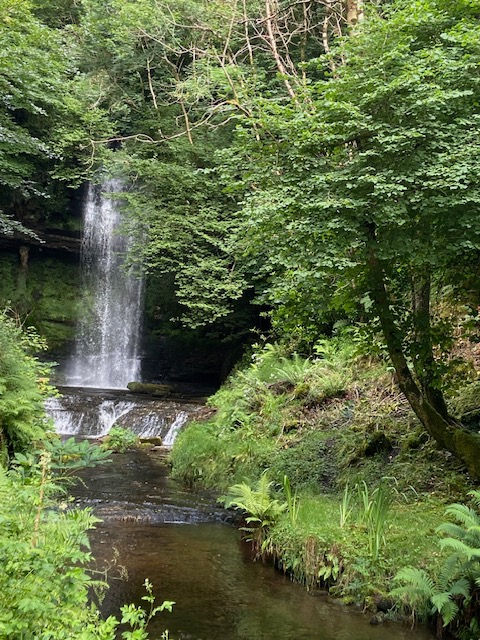To the waters and the wild
- James Tyler
- Jul 18, 2023
- 4 min read
There’s something hypnotic about a waterfall. Even at a distance you can feel its power – the way the rushing water cascades down from high up in a glistening white curtain to thunderously crash against the rocks of the stream below.

On a recent trip to Ireland, I stopped at the Glencar Waterfall in County Leitrim not far from the city of Sligo in the northwest of the Emerald Isle.
It’s a beautiful spot that magically mixes Irish folklore, poetry and geological science.
Glencar may not be Ireland’s tallest waterfall as that honor goes to the nearby Devil’s Chimney (‘Sruth in Aghaidh An Aird’).

But Glencar is a beauty at 50 feet tall and situated at Glencar Lough. Visitors can marvel at the waterfall from a picturesque, wooded walkway with viewing platforms.
A sign along the walkway explains the geological history of Glencar:
The immediate area is rich in both natural and cultural heritage and it is literally underpinned by a geological heritage that stretches back over 340 million years. All of the solid bedrock surrounding you formed during the Carboniferous period. At this time the island of Ireland was on or very near to equator and the entire area was covered in a tropical sea. As the waters of this sea receded, the muds from the sea floor, together with the remains of dead sea creatures hardened to form mudstone (or shale) and limestone. It is these rocks that are exposed at Glencar Waterfall.
Anyone visiting Ireland knows that the country isn’t quite whole. There’s a big split with 26 counties forming the Republic of Ireland while Northern Ireland, which is part of the United Kingdom, has six counties.
That division is small potatoes, however, in comparison to Ireland’s long geological history. About 600 million years ago during the Precambrian era, Ireland’s landmass was physically in two parts. And these two separate landmasses were at a latitude of around 80 degrees South, putting them near what is now northwest Africa.
Fast forward about 150 million years and Ireland is united (yay!) about 440 million years ago, but for over a hundred million years it’s covered by a tropical sea. That’s the Carboniferous period, which is when much of the island’s limestone is created, eventually making up about 65 percent of Ireland’s area.

Keep on going and during the Cenozoic era about 25 million years ago, Ireland has moved north thanks to the awesome power of plate tectonics. During the Quaternary that extends back about 3 million years, much of Ireland’s landscape was formed, and Ireland emerges from the last ice age about 14,000 years ago.
As the glacier ice retreated, what we now call the Glencar Valley and the waterfall at its edge came into being.
That’s a thumbnail of a thumbnail of Ireland’s roughly 1.7-billion-year geological history. Rocks that old can be found on the island of Inishtrahull in County Donegal, also in northwest Ireland.
But let’s pull ourselves out of the rabbit hole of geological information and return to the Glencar Waterfall. Because it’s not just the beauty of falling water that is important. Another sign at the site explains:
The underlying geology has controlled the diverse range of biodiversity seen nearby. In the walk up to the waterfall you may see some hazel and ash trees, both of which thrive on the alkali-rich soils that derive from the limestone. The mineral-rich waters that flow from the uplands above support a number of rare bryophytes (non-vascular plants that include liverworts and mosses) and the cliffs are home to a number of Arctic-Alpine plants thought to be a relic from the last Ice Age.

All that biodiversity creates a fantasy-like space in which the notion of faeries (the Aos Sí or Aes Sidhe) and the Fair Folk of Irish stories isn’t too wild an idea.
At least it wasn’t too wild an idea for acclaimed Irish poet and playwright William Butler Yeats to be inspired to create one of his most magical poems, “The Stolen Child.

Yeats was born in 1865 in a suburb of Dublin but grew up in County Sligo. There he became enchanted by the myths and legends told by the local people. Those stories included ones in which the faeries snatched children away to take to the faery realm.
So in 1886 a young Yeats draws on those folk stories to write “The Stolen Child,” and it’s published in Irish Monthly. A few years later he includes it in his first poetry collection, The Wanderings of Oisin and Other Poems.
In Yeats’ poem, the human child isn’t really snatched from his home but is more beguiled by the faeries to join them in theirs, a magical place of dancing and lush fruit. And in the third stanza the Glencar Waterfall is specifically described in the faeries’ entreaty:

Where the wandering water gushes
From the hills above Glen-Car,
In pools among the rushes
That scarce could bathe a star,
We seek for slumbering trout
And whispering in their ears
Give them unquiet dreams;
Leaning softly out
From ferns that drop their tears
Over the young streams.
Come away, O human child!
To the waters and the wild
With a faery, hand in hand.
For the world’s more full of weeping than you can understand.
It’s a beautiful poem, one of my favorites, and has a long history of being set to music. Loreena McKennitt, for example, included it on her debut album Elemental in 1985, and the Waterboys adapted it for their 1988 album Fisherman’s Blues.
Check out videos at Stolen Child - Loreena McKennitt With Description Lyrics. - YouTube and The Waterboys - The Stolen Child (1988) - YouTube.

So if you’re ever in the northwest of Ireland, stop by the Glencar Waterfall in Co. Leitrim.
It’s an enchanting place of natural beauty, geological history, folklore and poetry.
Maybe the faeries are on to something there after all.



Comments